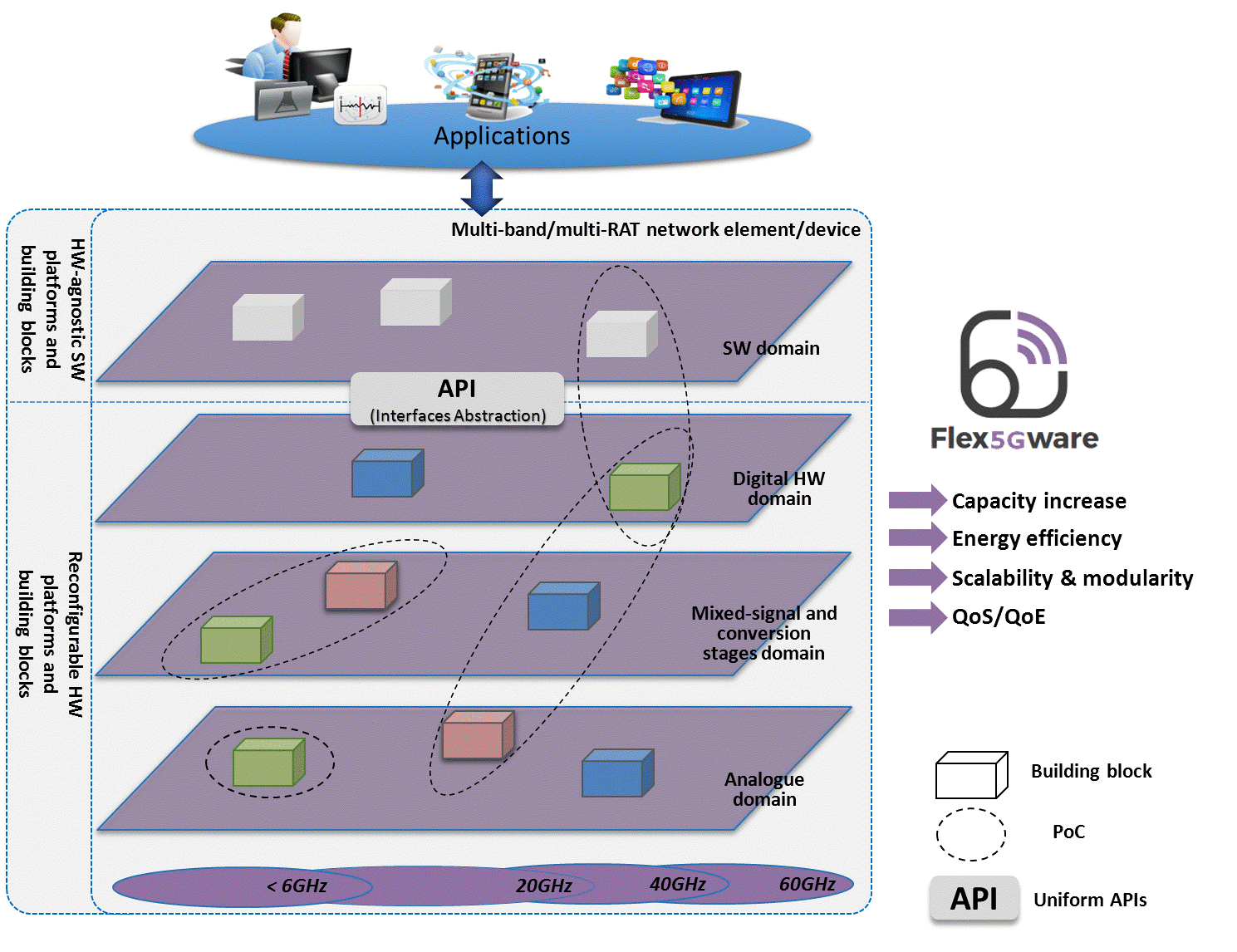WiFi & 4G/5G
The next generation 5G communication network and service environment must be capable to connect people, processes, data centers, content, knowledge, goods and other things. The challenge now is to provide a cost-efficient 5G infrastructure that has the inherent capacity, reliability, availability and security to provide a seamless and timely experience.
Today, mobile users still suffer a lot from connectivity hick-ups, e.g. when inside a train, car or other moving vehicle. To ensure a seamless experience while moving, the mobile network needs to handover the user’s communication session to the next, closest antenna station. However, the decision to trigger these handovers is not yet working so well.
Researchers from IDLab created however a unique algorithm that predicts how mobile users will move from one mobile antenna to another. Simulations showed that – based on those predictions – unnecessary switching between antennas can be reduced by up to 20%, thus also reducing the risk of temporary mobile connectivity loss.
“And as far as we know, this is really a unique approach,” emphasizes Prof. Steven Latré (IDLab). “To begin with, only a few predictive algorithms can do this; and we are the only ones working with standard 4G measurements, which eliminates the need for additional GPS support. That is important, because only a fraction of smartphone users have GPS enabled all of the time.”
Researchers from IDLab also contributed to the development of an intelligent system that seeks to automatically connect users to the best performing Wi-Fi or 4G antenna in their neighborhood. “Today, this decision is taken by each device independently, based on personal settings,” says Prof. Ingrid (IDLab). “Tests have shown that this approach can increase average mobile data rates up to 85%.”
The solution embraces distributed technology: It allows for the easy addition of new (4G/5G or Wi-Fi) antennas, without blowing up the costs. This is a major advantage for operators.”

“With a unique approach we can predict the direction of moving users, even for users that have the GPS turned off on their smart phones. With this prediction, we avoid the unnecessary handovers between base stations”
mmWave &FlexRadio
IDLab participates in the European research project Flex5GWare, led by INTEL Germany, that targets a next level of flexibility in 5G network elements and devices. The project tackles both hardware design challenges, as challenges on how to embed hardware-agnostic control and management software. Analogue components are being designed and evaluated to enable massive MIMO (Multiple Input Multiple Output) in mmWave spectrum bands. In the mixed signal and conversion stages research is being performed to enable full duplex communications, high-speed broadband convertions, etc. In the digital domain, the project aims to achieve drastic progress in HW features like FBMC (Filter Bank Multi-Carrier) transceivers, LDPC (low-density parity check) codes, etc.
The IDLab’s researchers contribute in the Flex5GWare innovation project with their expertise antenna design, short-reach RF-over-fiber communication and on software-defined radio control and management. The objective is to enable remote, software-driven reconfiguration of the radio hardware across heterogeneous wireless devices and access networks, taking into account the need for increased capacity, reduced energy footprint, as well as scalability and modularity for enabling a smooth transition from 4G mobile wireless systems to the 5G era.
Apart from INTEL Germany, leading the project, we collaborate a.o. with Ericsson, NOKIA and Telecom Italia.
“Today’s mobile networks lack the ability to reconfigure for multiple radio access technologies.”
“At IDLab, we optimize the designs for short-reach RF-over-fiber communication to ease the deployment of distributed wireless base stations and to drastically reduce the cost.”

SDN / NFV
Software Defined Networking (SDN) and Network Function Virtualization (NFV) are emerging as major transformational technologies, enabling the telecom sector with new network capabilities and business opportunities. To develop and deploy these new capabilities, as part of the envisioned, next-generation 5G networks, a number of challenges remain untackled.
IDLab participates in the research project, led by ATOS (Spain), that aims to bring a DevOps model for network function chaining and network service orchestration. The project adresses:
- models and tools for programming virtualized services.
- algorithms for uniform and integrated orchestration of network services, on top of an infrastructure providing connectivity, computation, and storage resources.
- tools for efficient and reliable deployment and management of developed services in a dynamic and scalable manner.
At IDLab, we focus our research efforts on carrier-grade Software-defined networking, NFV Management and orchestration and QoS monitoring, profiling and prediction, leveraging on industry-adopted standards such as OpenStack, OpenFlow, Open vSwitch, FloodLight, Docker, NOX and POX. In the SONATA project, we are contributing to a Service Lifecycle manager.
“With a Service Lifecycle Manager, we aim to accelerate the adoption of software networks, supporting the fulle life-cycle: service development, testing, orchestration, deployment, management and operations. “

